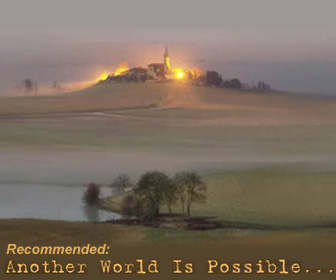| « Texas executes innocent man; governor impedes investigation | When Leaders Fail; We the People Must Lead » |
'4 Degrees & Beyond'
From Andrew Glikson

Proceedings of the conference sponsored by the UK Met Office Hadley Centre, Tyndall Centre and the University of Oxford, 28-30 October, 2009 www.eci
Key Message: "Temperature rises above 2°C are likely to cause major societal and environmental disruptions through the rest of the century and beyond.“
PLANETARY BOUNDARIES, ABSTRACTS OF KEYNOTE PAPERS
Terra quasi-incognita: beyond the 2°C line
Professor John Schellnhuber
The G8 countries as well as the most important developing countries have formally acknowledged the emerging scientific consensus that global warming should be confined to maximally 2°C. My presentation will first summarize salient general arguments why that "guardrail" should be observed and then sketch the scope of the challenges involved in holding the line. The latter analysis will be based upon recent insights on the relationship between planetary mean temperature and cumulative CO2 emissions. According to the new report of the German Advisory Council on Global Change (WBGU), a full, fair and feasible solution of the climate problem can be derived from that "budget approach", yet its adoption by the multilateral political system is rather unlikely. Therefore, a world warming up by 3, 4 or even more degrees needs to be faced or, at least, imagined. The lecture will proceed by reviewing the state of the art concerning the highly nonlinear impacts on the Earth System that can be expected as a consequence of unlimited climate change or cannot be safely excluded to arise beyond the 2°C line. The focus will be on "tipping elements" in the planetary machinery and their possible interactions. The talk will conclude by touching upon the tantalizing question whether there is such a thing on Earth as a "run-away greenhouse effect".
Tropical forests in a 4+° World
Professor Yadvinder Malhi
Tropical forests are biologically the richest biomes on Earth, home to half of global biodiversity, and have harboured this immense biological wealth in a climate that has only shifted slowly throughout paleohistory. In this paper I will examine how tropical forests may respond a global warming of 4° within a timescale of a century. The rate of tropical warming projected this century is perhaps unprecedented for 55 million years, and may present acute problems for tropical organisms, which are not adapted to large temperature fluctuations. The tropics also have very shallow spatial gradients in temperature, and organisms would have to migrate or disperse great distances to remain in equilibrium with climate. There would inevitably be a substantial reorganisation of the ecology and species composition of tropical forests, with increased risk of extinction of those species ill-adapted to such rapid climate change. The warming and high CO2 would affect water use by tropical forests, and may lead to enhanced water stress even in the absence of precipitation change. Tropical forests will experience regional changes in precipitation, and some may face substantial decline in precipitation, with increased likelihood for the spread of fires. Much attention has focussed on the potential for a dieback of the Amazon forest, and we will review the evidence and mechanisms for such a dieback. The interaction between climate change and ongoing tropical deforestation may be crucial in determining the fate of many tropical forests. This will almost certainly be the most challenging century that tropical forests have faced for a long, long time.
4+°: what might this mean for agriculture in sub-Saharan Africa?
Dr Philip Thornton, International Livestock Research Institute (ILRI), Nairobi, Kenya Peter G Jones, Waen Associates, Dolgellau, UK
Dr Philip Thornton is based in Edinburgh, UK and works with the International Livestock Research Institute in Nairobi, Kenya, and the University of Edinburgh. His activities embrace systems characterisation and analysis, ex post and ex ante impact assessment, a wide variety of systems modelling, poverty mapping, and vulnerability assessment. He completed a BSc degree at the University of Reading, UK in 1979, specialising in agricultural systems. Dr Thornton earned his PhD degree, that involved the interface between biophysical and socio-economic models, a general area that has been a major interest ever since, in farm management (1983) from Lincoln College, New Zealand. He spent three years as a Post-Doc at the International Center for Tropical Agriculture (CIAT) in Colombia, working on bioeconomic modelling of livestock production systems in Latin America, and then three years based at the University of Edinburgh on crop and household modelling projects in Central America and southern Africa. In 1990, he joined the International Fertilizer Development Center in Alabama, and was involved in projects in various countries in Latin America, Africa, Asia and Eastern Europe. He started with ILRI-Nairobi in 1996. He serves on the Board of Directors of the Soils Management Collaborative Research Support Program (CRSP) and of the International Consortium for Agricultural Systems Applications (ICASA), and is Editor-in-Chief of the journal Agricultural Systems. In the SLP, Dr Thornton led work on poverty mapping and impact assessment of maize improvement. He is currently involved in the development of a framework to assess ex-ante the impact of improving feed resources in crop–livestock systems.
Sea level rise and impacts in a 4+° world
Dr Pier Vellinga, Wageningen University / Director of climate program
The most recent scenario's for sea level rise as published in scientific literature and governmant policy papers be reviewed, including the ones developed in UK, Germany, Netherlands and California and other places in the world.
In order to explore the effects of sea level rise on society, such scenarios need to be combined with scenario's regarding the effects of climate change on storm surges, hurricanes/typhoons and river run-off.
Combining these scenario's can become a highly complex statistal excercise. The physical basics will be explained and examples will be given of a first order approach.
Examples will be given of the way metropolitan areas and rural areas can protect themselves from more frequent flooding taking a long term perspective. Moreover some cost estimates will be presented.
-###-
Communicated by Andrew Glikson, Earth & paleoclimate scientist



